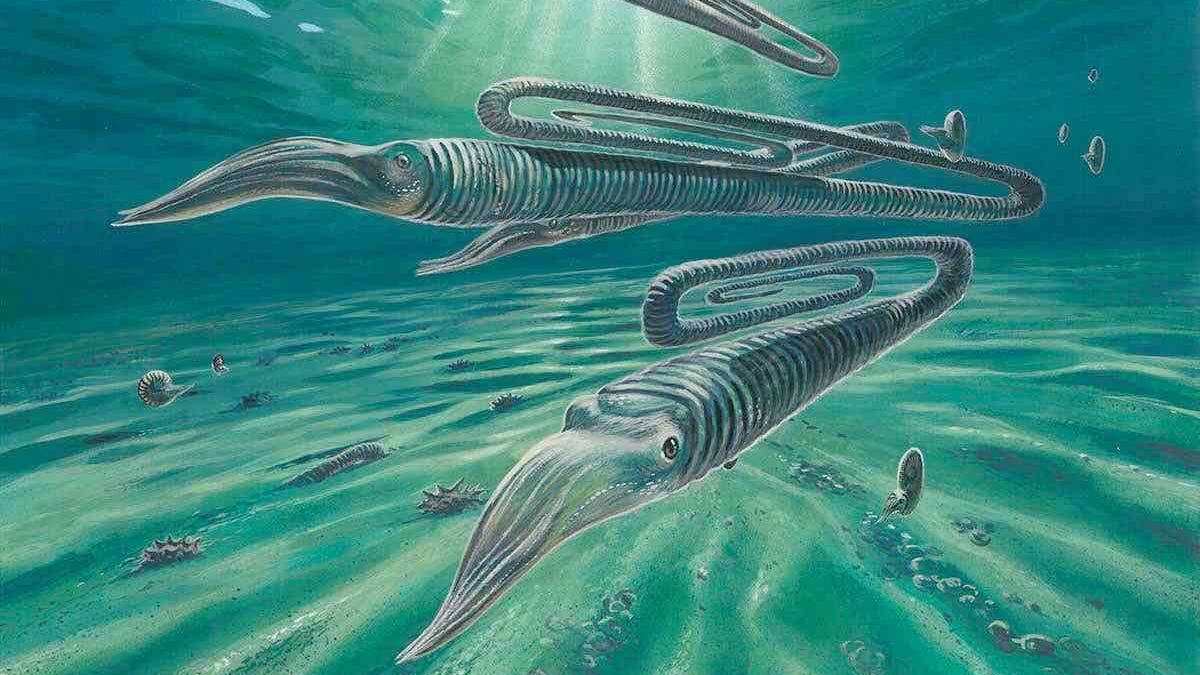Ancient 'paper-clip squid' may have lived to be 200
An unusual-looking underwater creature named Diplomoceras maximum existed around 68 million years ago, and new research says it lived to a ripe old age.

Here's an artist's impression of Diplomoceras maximum.
Paper clips didn't exist 68 million years ago, but this squidlike water creature that looks like one did. Diplomoceras maximum measured almost 5 feet (1.5 meters) long and had an outer shell that has the appearance of a paper clip. And the ammonite (an extinct tentacled cephalopod) may've lived a very long life, according to new scientific research presented last week at an online meeting of the Geological Society of America.
Professor Linda Ivany and fellow scientist Emily Artruc at Syracuse University, New York, have discovered clues that Diplomoceras maximum might've lived to the ripe old age of 200. The evidence comes from chemical signatures found in samples taken from the 20 inch (50 centimeter) long section of its shell.
When Ivany and Artruc examined the carbon and oxygen isotopes from the shell, they found a repeating pattern in the isotopic signatures. They concluded that these signatures showed the yearly release of methane from the ocean floor, according to a Wednesday report from New Scientist.
This pattern matched up with the sculptural ridges perpendicular to the length of the shell. This suggests that the creature added one new rib to its shell each year, a finding that helps scientists determine the organism's life span.
It's important to note that the cephalopods alive today -- octopuses and squid -- live to be only about 5 years old. Shelled cephalopods, like the nautilus, can live into their 20s.
The reason for the long life span of Diplomoceras maximum could've had something to do with the creatures' slow metabolism. Scientists speculate that it lived near Antarctica, where harsh, cold weather conditions may've meant food supplies were scarce.
Diplomoceras maximum suffered a mass extinction around the same time as the dinosaurs, according to a 2016 study by Leeds University.
Now that scientists have a better understanding of the Diplomoceras maximum's life span, they can hopefully learn more about the unusual sea creature.
"If you know something about an organism's life span, you learn a lot about its ecology," Ivany said.

